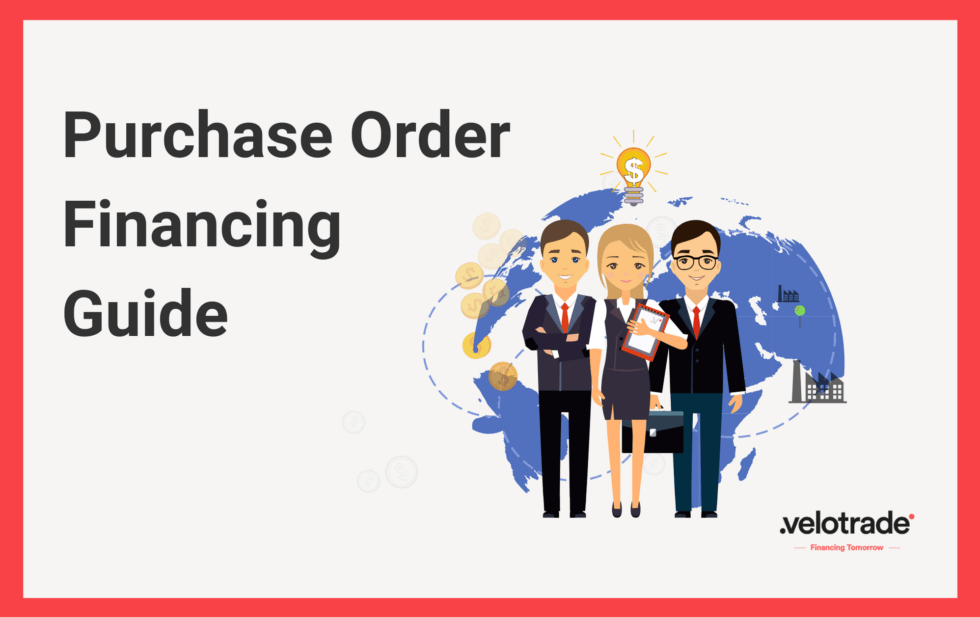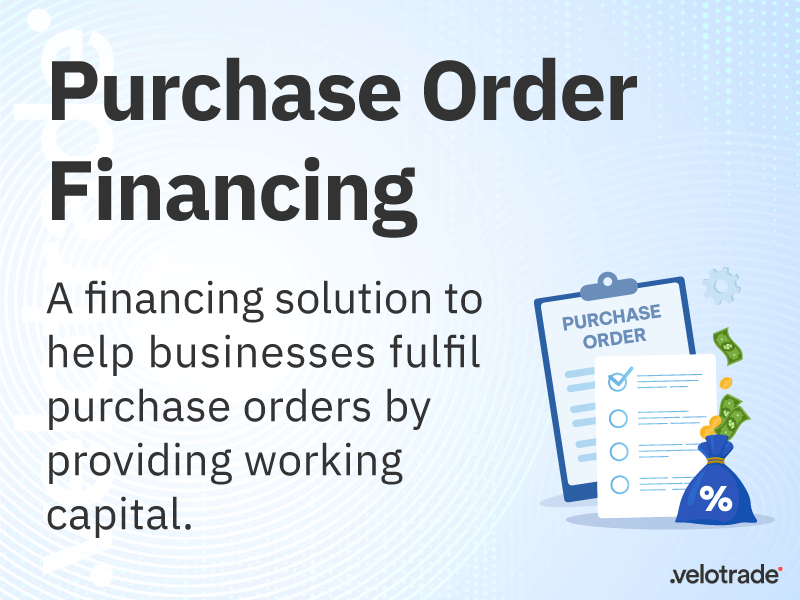Purchase order financing is when businesses seek capital to procure materials from suppliers on purchase orders issued by buyers.
The facility allows businesses to pay suppliers before invoicing buyers.
Many SMEs are not able to fulfil large orders due to cash flow constraints at the time of receiving the order. This is when purchase order financing comes into play!
Highlights of this article:
- How do Manufacturers Fulfil Orders From Big Buyers?
Understand the different parties involved and the commercial relationship - Why use PO Financing?
Get to know the advantages and disadvantages of this facility - Examples and Calculation
A million unit order example from Apple; see how PO Financing enables firms to fulfil more and larger orders
Content
How Does Purchase Order Financing Work?
While a loan usually involves only 2 parties: the borrower and the lender, a PO financing agreement includes 3 parties:
- The Borrower is seeking funds to pay the supplier
- The Lender is the company providing purchase order financing
- Supplier is supplying raw materials or manufactured goods
The Process
Purchase order financing is a form of import finance that enables companies to expand their exporting capacity.
- The borrower receives a large purchase order from a well-established buyer. A large order requires the company to procure several components from manufacturers.
- The borrowing company reaches out to its supplier regarding procurement costs. The supplier provides a cost quotation.
- Based on the quotation, the company determines the need for financing. Many suppliers ask for a pre-shipment deposit to proceed with production—for instance, 30% on order and the remaining 70% on shipment.
- The company reaches out to a financier using its purchase order.
- The lender reviews the application process and sets up a credit limit.
- Once the credit check and due diligence are confirmed, the financier approves a percentage of supplier costs based on:
- the borrower’s qualifications
- buyer and supplier reputation and creditworthiness
- The lender then pays the supplier for supplies directly. The supplier manufactures and ships the supplies to the borrower.
- After the borrower receives supplies, the goods are shipped to the buyer (customer), and the purchase order is fulfilled.
Brought to you by Velotrade, a marketplace for corporates to access financing.
Understand the supply chain finance process flow to know what happens in the latter part of the finance process!
Purchase Order Financing Pros and Cons
Although similar to short-term loans, PO financing offers distinct benefits and drawbacks.
| Fulfils large buyer orders | Good for firms with large buyers |
| Helps both established and growing firms | Fit for firms trading with physical goods |
| Supports different parties in the supply chain process | Only ideal for certain industries: manufacturing, retail, import-export |
| Good trade-off to pay fees than decline order | Only worth the cost if dealing with high-margin transactions |
PROS
PO financing fulfils large orders that help distributors and wholesalers meet high consumer demands at low upfront costs.
Funds can be used to sell high-margin products, and the risk of idling stocks is reduced.
Well-established firms can release working capital for business expansion, including:
- acquiring new capital or businesses
- expanding product lines
- entering new target markets or geographies
Meanwhile, businesses tight on capital can use it to support current demand and operations.
Hence, such trade finance solutions benefit businesses of all sizes.
The return is much higher than the financing fees required to fulfil the order. Businesses can maintain customer and supplier relationships by accepting orders they may have rejected otherwise.
PO financing enables them to have a sustainable debt structure where third parties cover expenses like production costs, and the borrower is no longer the middleman.
Let’s look at 2 purchase order financing cases to realise the benefits of the facility.
CONS
While PO financing is an effective supply chain management method, the solution is only ideal for specific business types.
This includes firms in the manufacturing, retail, and import-export industries. These firms have large buyers who rely heavily on suppliers to outsource goods.
Hence, the solution is not a good fit for service-based businesses.
Manufacturers dealing with small buyers and purchase orders are also not a good fit due to the poor trade-off. The solution works best with high-margin transactions due to its cost.
Despite the drawbacks, PO financing is important in securing a business’s end-end supply chain process and creating an efficient supply chain model.
An importer may also be an exporter. Unlock the import-export trading cycle to understand how.
Key Takeaways
- Purchase Order Financing Comprises 3 Parties
The supplier provides raw materials to the buyer (borrower of funds) who needs financing to buy supplies. The lender is the company lending money. - The Facility Enables Firms to Fulfil Large Orders
Funds can be used to pay advance deposits to suppliers and accelerate production. - Worth the Fees
Businesses gain customer loyalty and maintain relationships with all parties involved by accepting deals that might have been rejected otherwise. - Ideal for Specific Business Types and Products
Manufacturing, retail, textile, and other import-export industries with large buyers and high-margin products benefit.
Despite the drawbacks, PO financing is important in securing a business’s end-to-end supply chain finance model.
Let’s look at an example to uncover the process and costs!
Purchase Order Financing Example
Imagine you were an electronic components provider and just received a million-unit order from Apple. The purchase order is to be settled in 60 days.
To produce these microchips, you need chipsets and semiconductors from various manufacturers.
As buyers often buy on credit, there is a big gap between when the goods are shipped and the payment is made.
This slows your business’s cash flow cycle causing you to have inadequate cash to procure semiconductors from the manufacturer.
How can you accept the PO if you need more cash to source the parts from your supplier?
This is where you get in touch with a lending institution. PO gives you a higher bargaining power as your buyer is a reputed company likely to honour the commitment.
Cost Breakdown
The financier agrees to fund a percentage of supplier costs, and you must pay the remaining. Therefore, some funds need to be readily available.
Let’s say the lender agrees to finance 50% of the PO in this case, and the interest charged is 3% per 30 days.
The financing cost would hence be $60,000 for 60 days, calculated as follows:
1,000,000 × 0.03=30,000
30, 000× 2=$60,000
Thus, after deducting the fees, you receive a cash advance of $440,000 as calculated below:
1,000,000 × 0.5=500, 000
500,000 −60,000=$440,000
The lender pays the supplier directly for materials, which are then shipped to you.
In the case of a down payment, interest is charged on the advance amount and the remainder separately.
Purchase order financing gives you the financial support to settle the PO from Apple.
These fees and costs are pre-agreed at the time of the lending agreement, so there should be no nasty surprises.
Customised
Diverse
Global
Velotrade's dynamic Supply Chain Finance solution fulfills corporate's large trade volumes financing imports and exports from multiple suppliers.


